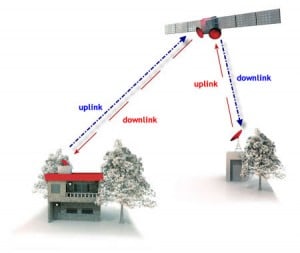


This means control information can be beamed toward a particular UE. Second, PDCCH in 5G supports device specific beamforming. This is important because the bandwidth may be much larger, up to 400 megahertz in 5G, and UEs in 5G are not required to support a large bandwidth, opening the door to simpler, cheaper devices. First, the PDCCH may not span the complete 5G bandwidth, whereas in LTE it always does. But there are several significant differences with LTE, some of which will be explained in much more detail in another episode of this "5G Explained" series. Here again, you can see how MathWorks 5G Toolbox models the PDCCH processing chain with a few lines of code.Īs in LTE, the UE must look for and decode the PDCCH, and there are several possible candidate search spaces and configurations.
#Uplink downlink series#
We will explain this mapping in more detail in the next few slides as well as in another episode of this "5G Explained" series about core sets. You can see how MathWorks 5G Toolbox lets you succinctly describe this processing chain with a few lines of MATLAB code.Īfter encoding, downlink control information is scrambled, QPSK modulated, and mapped to resource blocks with a very specific pattern. The CRC value is scrambled with a UE identifier called the radio network temporary identifier or RNTI in order to indicate which UE the message is intended for. Another difference with LTE is that the CRC used here is longer at 24 bits instead of 16 for LTE. This is the main difference with encoding in LTE where tail-biting convolutional encoding was used.

#Uplink downlink code#
Finally, format 2 address information needed for groups of UEs and TPC commands.ĭownlink control information uses polar code for error protection.
#Uplink downlink full#
It is more compact than the full format with underscore 1 because it doesn't include all options and, therefore, it trades off less scheduling flexibility for reduced control overhead. The format with underscores 0 is called the fallback format. This means it includes information about the way data was sent to the UE as discussed on the previous slide.įor both uplink and downlink information, there are two possible formats: one with underscore 0 and one with underscore 1. Format 0 is for uplink grant, meaning that it contains information that pertains to data the UE is about to transmit on the uplink. The user equipment needs to decode the DCI before they can decode downlink data or transmit uplink data.ĭepending on the content of a DCI, one or more of several formats can be used. It indicates the location in time and frequency of the data that is scheduled for transmission, the modulation and coding schemes used, the number of antenna ports or layers, as well as other aspects such as HARQ. It is carried by the PDCCH or physical downlink control channel. In the process, we will introduce the concepts of resource element groups and control channel elements.ĭownlink control information, or DCI, carries control information used to schedule user data, PDSCH on the downlink and PUSCH on the uplink.

We will look at its content, how it is encoded and modulated, then mapped to the 5G New Radio slot via the PDCCH or physical downlink control channel. This is a new episode of our series, "5G Explained." In this video, we discuss downlink control information or DCI in 5G New Radio.


 0 kommentar(er)
0 kommentar(er)
